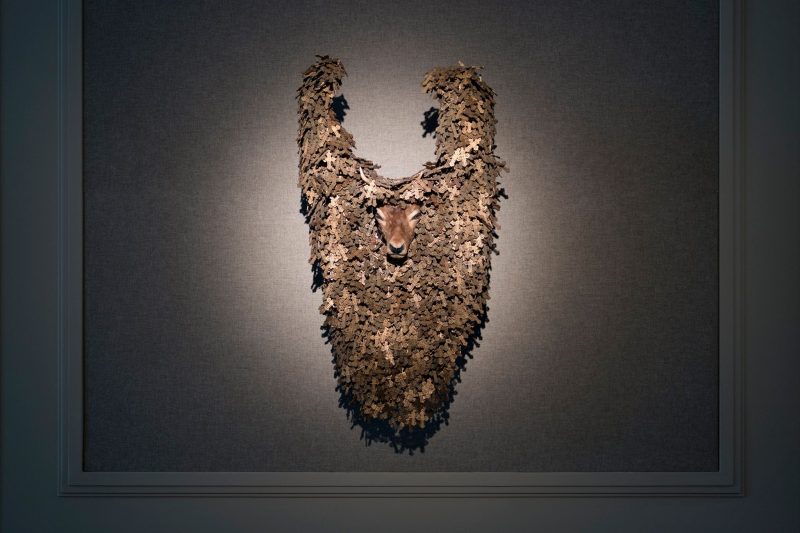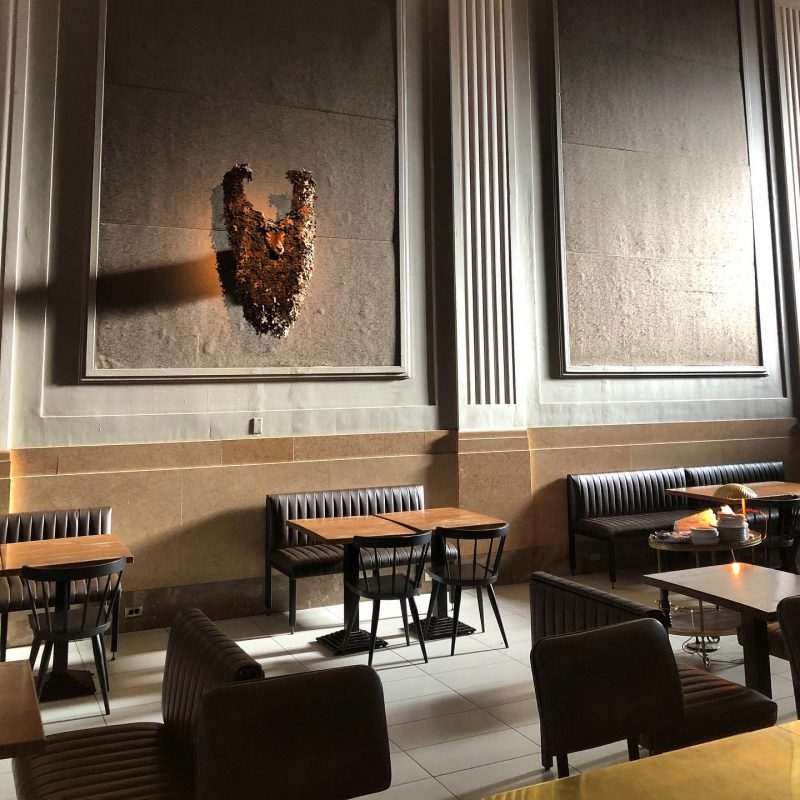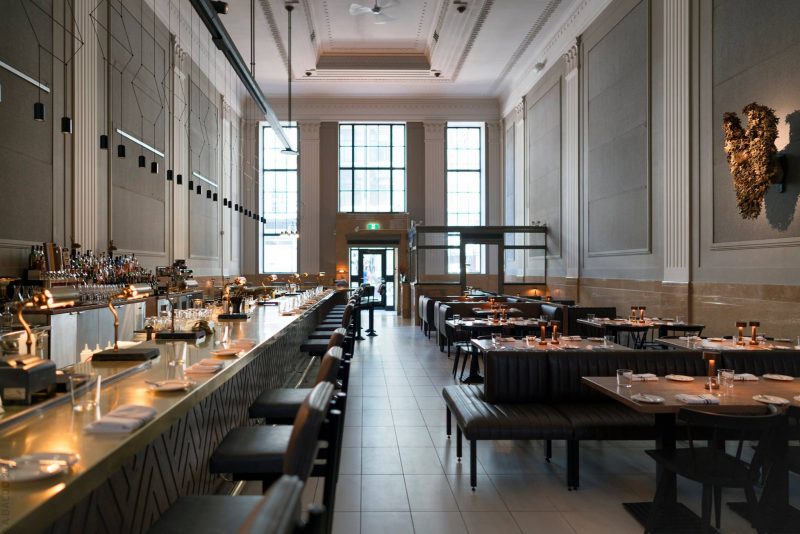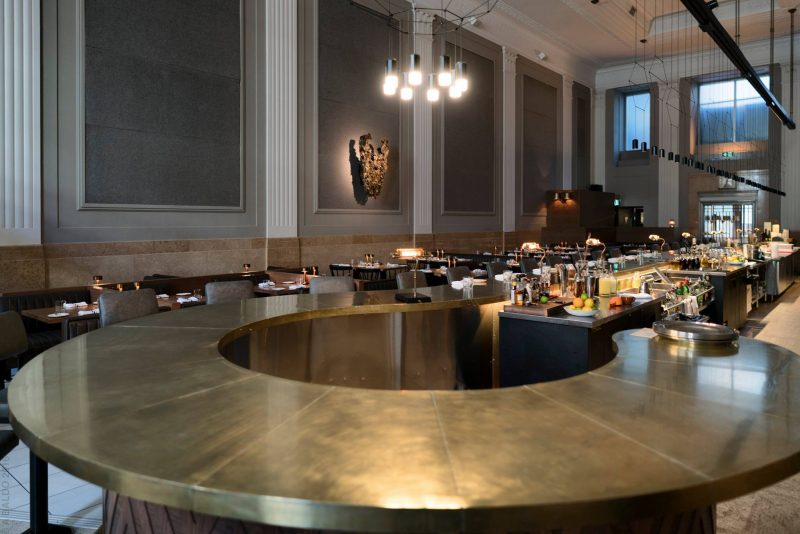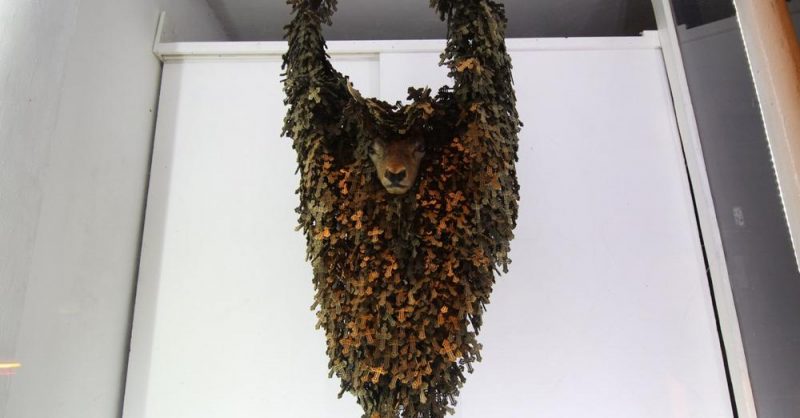SOLD. Rowan Corkill (London, Engand), The Seeker, 2016
The Seeker 2014-2016.
Permanently on display @ The Riviera, Ottawa, Canada.
Taxidermy deer head, wooden rosary crosses, beads, rope, fabric, metal.
“As the hart panteth after the water brooks, so panteth my soul after thee, O God.”
The stag as a symbolic reference to the Christian faith is arguably one of the most prominent and significant. It is a symbol associated with the soul’s desire for purification, piety, religious aspiration and longing. The stag represents the purest of faith within the human soul, it tells of the journey and path to finding faith as evident in the story of St. Eustace.
The purity and strength of the stag lends it to the greatest of all symbolism within the catholic faith, the symbol of Christ. The stag is a warrior of faith battling against the devil, an evil within nature as represented by the snake. The stag tramples the snake and destroys it with its breath of water triumphing over the devil and all the sins of nature.
Yet the snake is also the symbol of mother nature, the true creator of living things without sin or judgement. The snake represents the ground we stand on, the water we drink and the air we breathe. It represents the planet that mankind has been so quick to dismiss for heavenly ideals and aspirations.
‘The Seeker’ is both a representation of faiths power and its potency. It questions the relationship that certain belief systems have had with nature, and the way in which it has often been disregarded or wrongly accused. The stag represents a nature that has been shrouded by beliefs masking the power of true creation. It is not faith that we seek but nature itself.
*
Rowan Corkill is a Scottish artist based in Hastings.
He has exhibited nationally and internationally with works in private collections in Europe, North & South America, and Asia.
Working primarily in sculpture and photography, Corkill’s work explores the complex relationships between humans and the natural world, often referencing past cultures and civilizations as a means of understanding our ever-changing view of the planet.
Rowan’s works possess a sense of power as well as fragility, reflecting a duality that exists within nature. The artist’s practice pays particular attention to humankinds’ current relationship with the natural world and the need to change our destructive tendencies towards the planet.
Materials play a strong role in the artist’s practice, particularly the use of animals and plants which are collected and used in most of his works. Animal hides and skins are incorporated into sculptural works through taxidermy techniques which the artist has practiced for over 10 years. These taxidermy pieces do not fit within standard notions of the art form, instead of favouring the realism of Victorian taxidermy Corkill’s works draws more from ethnographic objects such as African Nkisi objects or Nagaland head trophies.
The use of taxidermy in his work acts as a foundation on which to apply materials, most of which are imbued with symbolic meanings which elevate the objects beyond the norms of the everyday. These symbolisms, which cultures have applied to almost every facet of the natural world, drive the artist to explore new materials and provide a never-ending appreciation for both nature and mankind’s creative interpretations of it.
All animals have been ethically sourced.
See Artwork on Location:
https://guyberube.com/design-concept-the-emperial-ottawa-2015/https://guyberube.com/design-concept-the-emperial-ottawa-2015/
